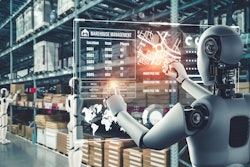
Demand forecasting has become more complex in today's volatile buyer’s market.
As it is, this process is sensitive to external factors and exogenous variables. In the past, organizations relied on gut instincts and guesstimates to make decisions—but as sales behaviors and product life cycles continue to change, this approach has proven ineffective.
More businesses began relying on predictive analytics to examine trends and patterns to bypass demand inaccuracies. However, with new challenges such as weather fluctuations, inflation rates, personal bias, Covid-19—and the list goes on—standard datasets became outdated.
Why ML for Demand Forecasting?
Machine learning (ML) has surpassed traditional prediction tools. In fact, according to Mckinsey, “ML-based forecasting can reduce errors significantly and increase accuracy, leading to a 65% reduction in lost sales and decreasing warehousing costs by up to 40%.”
 Intuendi
Intuendi
Beyond being used to solve conventional challenges such as delivery lead time, transport costs, inventory waste or poor decision-making, ML can even predict users’ intent through cognitive search.
But despite being able to cover (nearly) any task, ML algorithms are still challenged by data availability, size, quality, accuracy and more. The lack of these data points requires you to use a combination of ML and statistical models guided by experts for the best outcome.
Benefits of ML for Demand Forecasting
While the learning curve for machine learning might give you an uphill climb in the beginning, the beauty of it is that it can be used without explicitly having strong programming skills.
You might only hear of giants such as Amazon, Uber or Netflix using ML to better understand their customers, but it can assist any team (regardless of the size) in financial, retail, legal, healthcare, travel and other industries, in making better decisions with minimal human effort. In addition, you will benefit from:
- Automatic processing of data—it’s humanly impossible to compete with the speed of an automated machine. (Not to mention, receive the same results in minutes.)
- Accuracy that you can trust—you won’t have to rely on guesstimate decisions thanks to the explainability improvement of complex Machine Learning models. You will be able to make decisions on predictions in advance, stay competitive and act faster to market and demand changes.
- Save time, money and resources—avoid inventory wastage and unnecessary costs made by inaccurate decisions. Maximize profitability and better allocate resources.
But How Does ML Work For Forecasting?
Considering that demand forecasting relies on numerical and time-specific estimates, Time-series Analysis models are commonly used in this process (this approach uses existing sales data).
When dealing with tasks that demand a high level of accuracy, an ML and Time-series Analysis will make available several models and algorithms that could be used based on task peculiarities, ex. the size of the data. In cases where the availability of data is high Recurrent Neural Networks perform better, on the other hand simpler models such as Arima give better accuracy results in sets with poor data.
Only once selected the appropriate configuration for your task you are able to perform a forecast. By constantly analyzing the results you’ll understand how the algorithm interpreted the information. You can use this for continuous optimization to keep improving your model performance. Let’s summarize the process:
- Build your dataset using historical sales data.
- Find the best model configuration depending on the task difficulty.
- Train your model on the built dataset.
- Predict the next outcomes and start analyzing the results.
- Periodically refine the model, once new data is available.
How Can ML Assist with Demand Changes?
When it comes to demand changes, ML does the heavy lifting for you. There are various factors that impact demand: consumer taste, income (buying power), expectations, competitors in the market, technological influence, etc., but with ML being able to now predict cognitive elements such as intent, sentiment, and more, you can certainly rely on it to anticipate demand changes before they occur. For instance, how the market will react to a specific pricing change or a round of layoffs, and how it will affect you. Should this prove difficult, machine learning can help you adapt fast enough to avoid feeling the burn of it.
Past events, such as the COVID-19 pandemic, and a looming recession make it impossible to stay relevant and competitive without the help of artificial sources. If these unpredictable events have taught us anything, it’s to think fast and modernize with the times. Traditional forecasting methods are not enough to outshine competitors; consider a base of machine learning and inventory optimization software to stay ahead of demand forecasting changes.



















